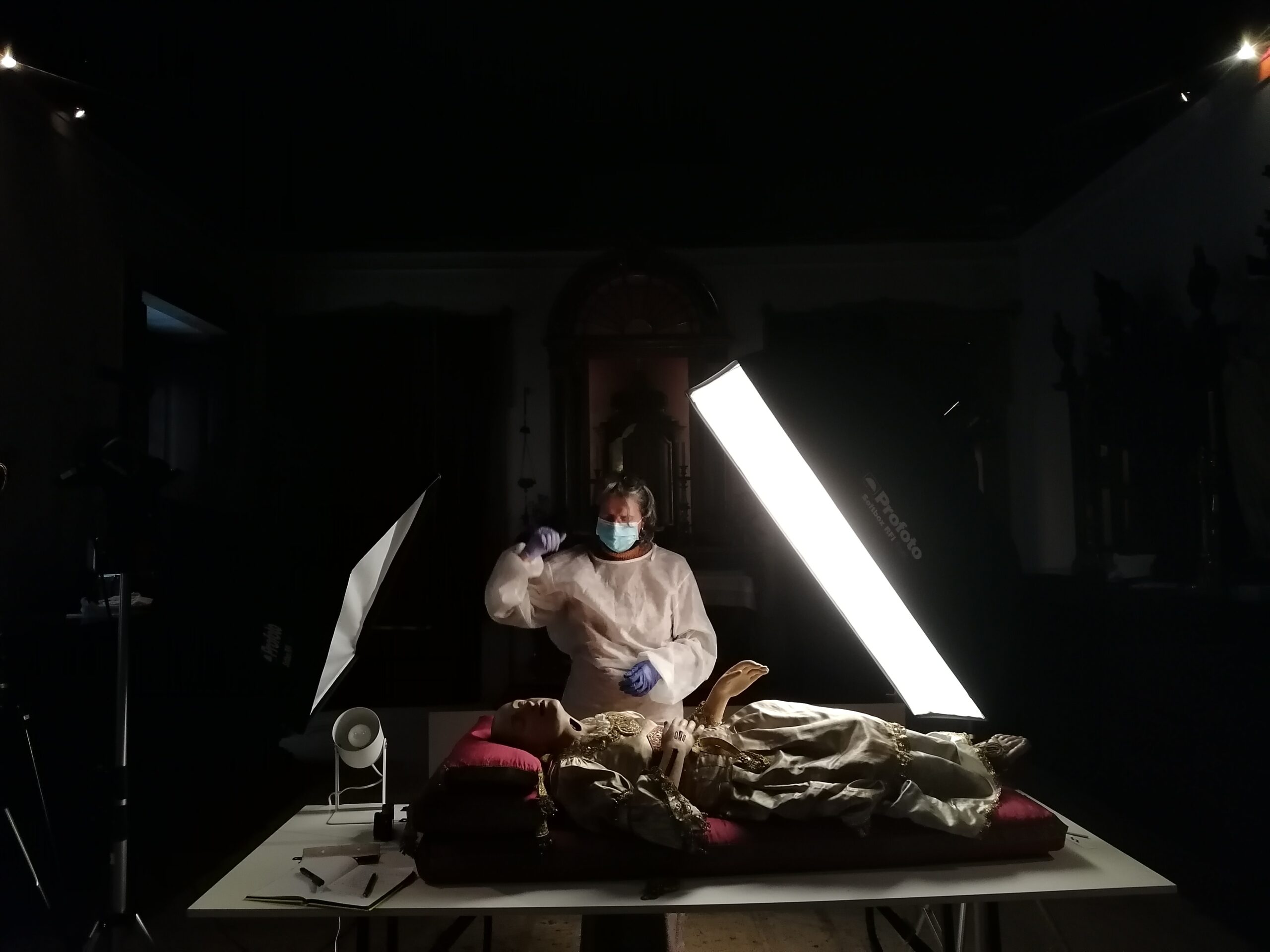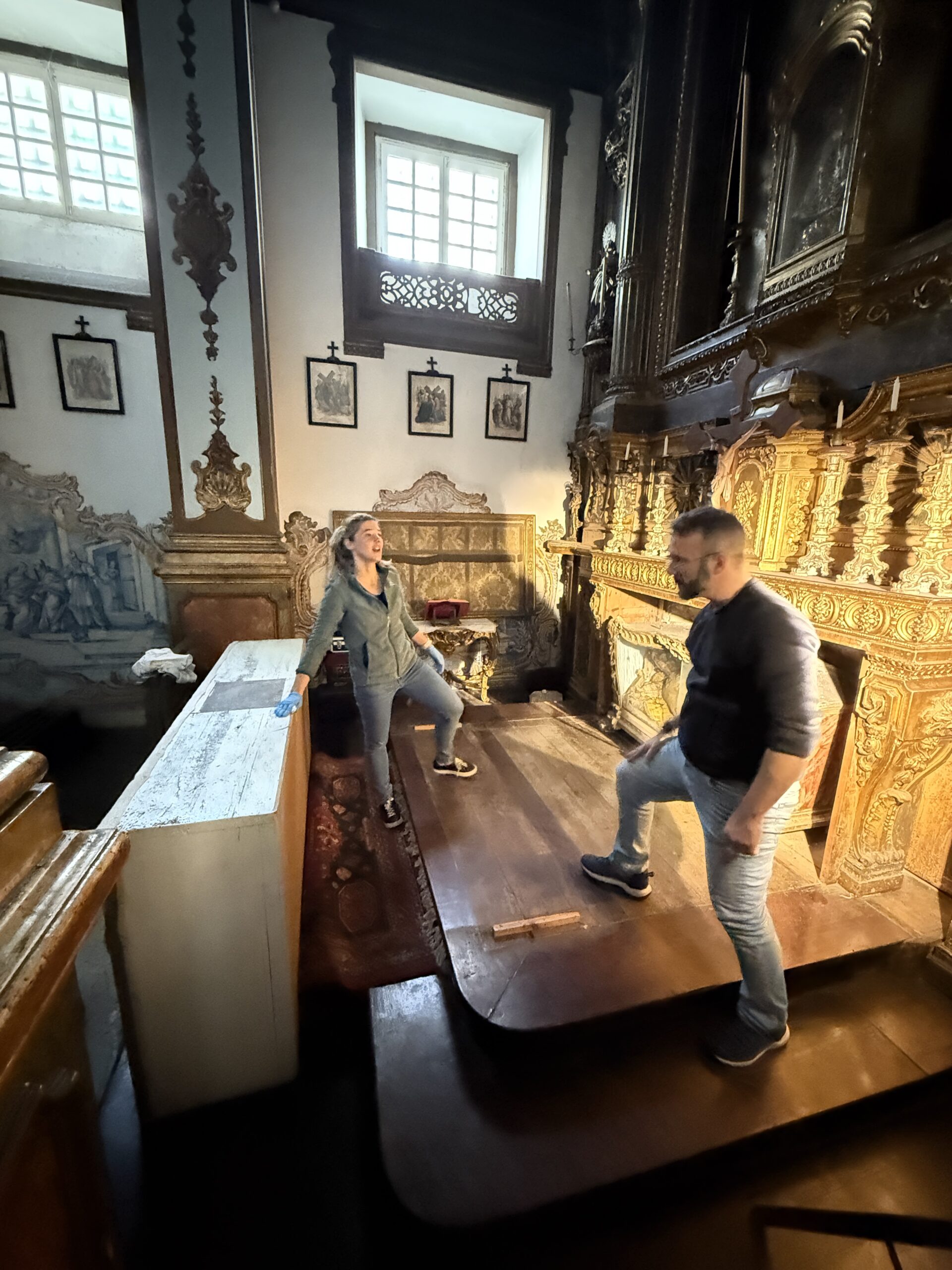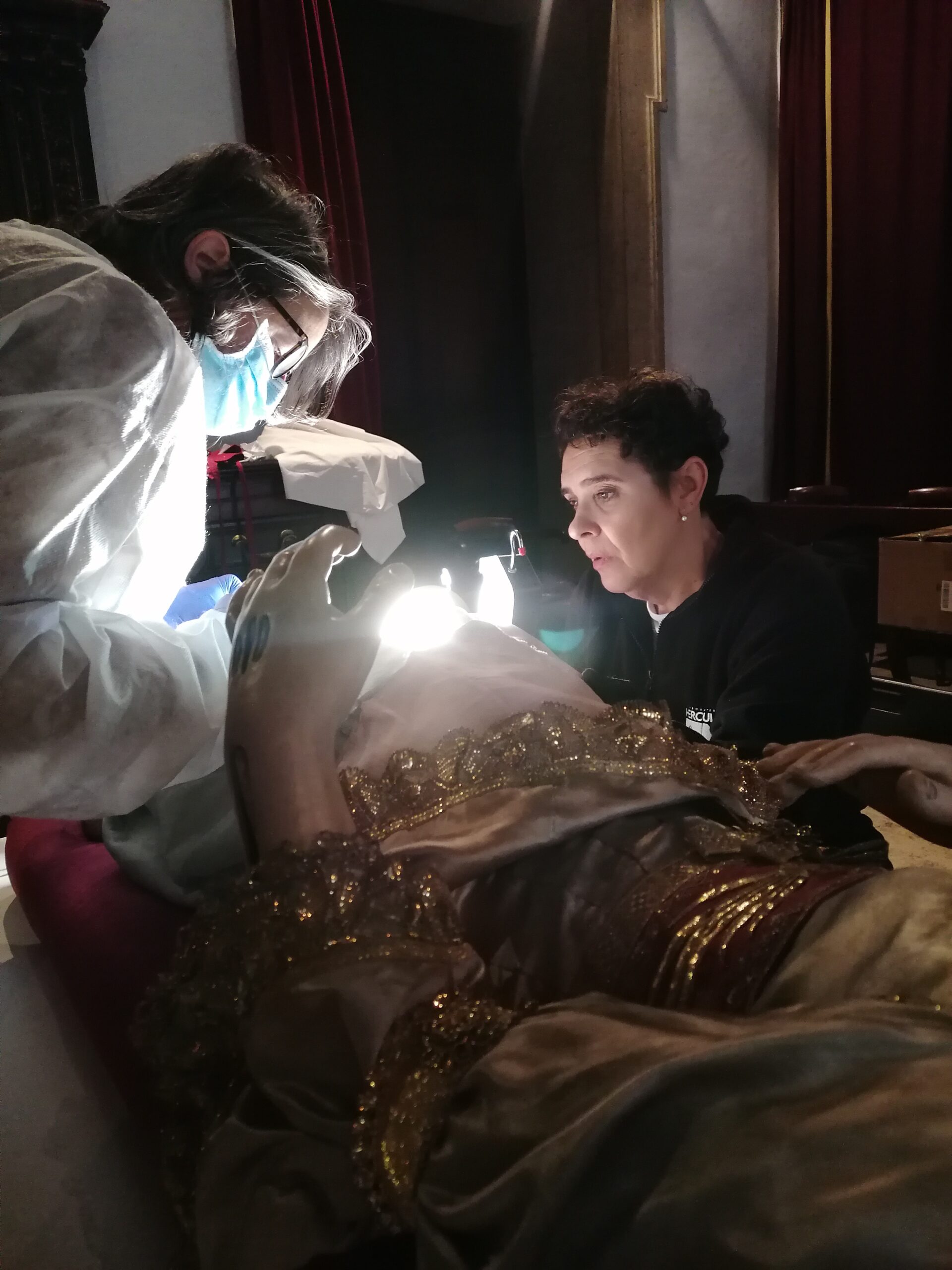
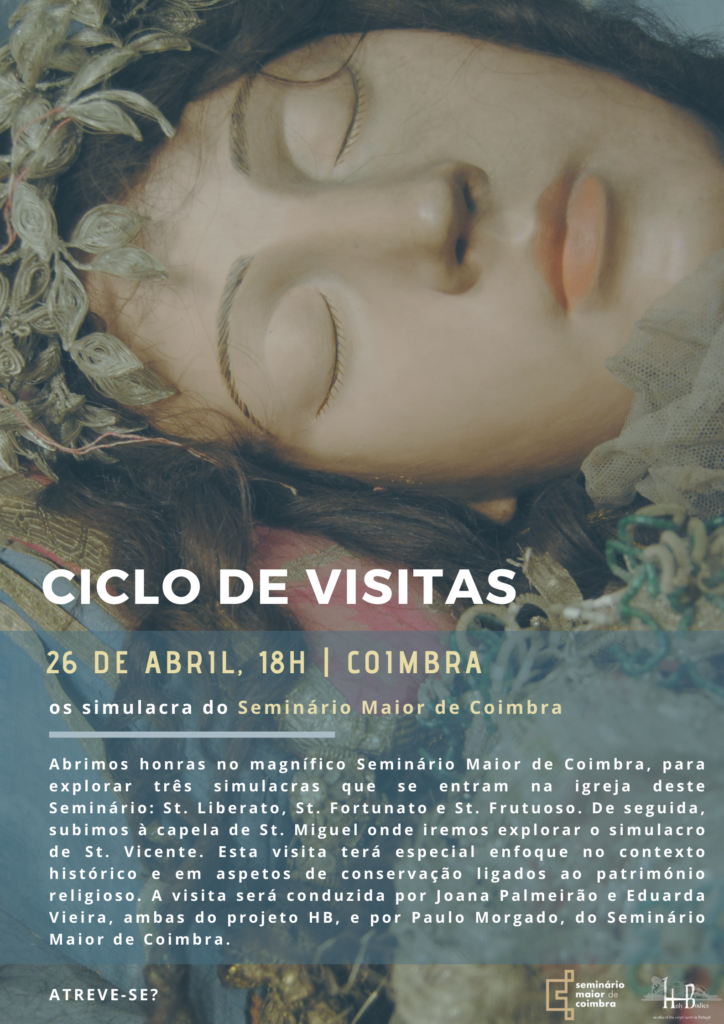
From now on, simulacra will finally “have a voice” in their physical context, whether in churches, monasteries, or private houses.
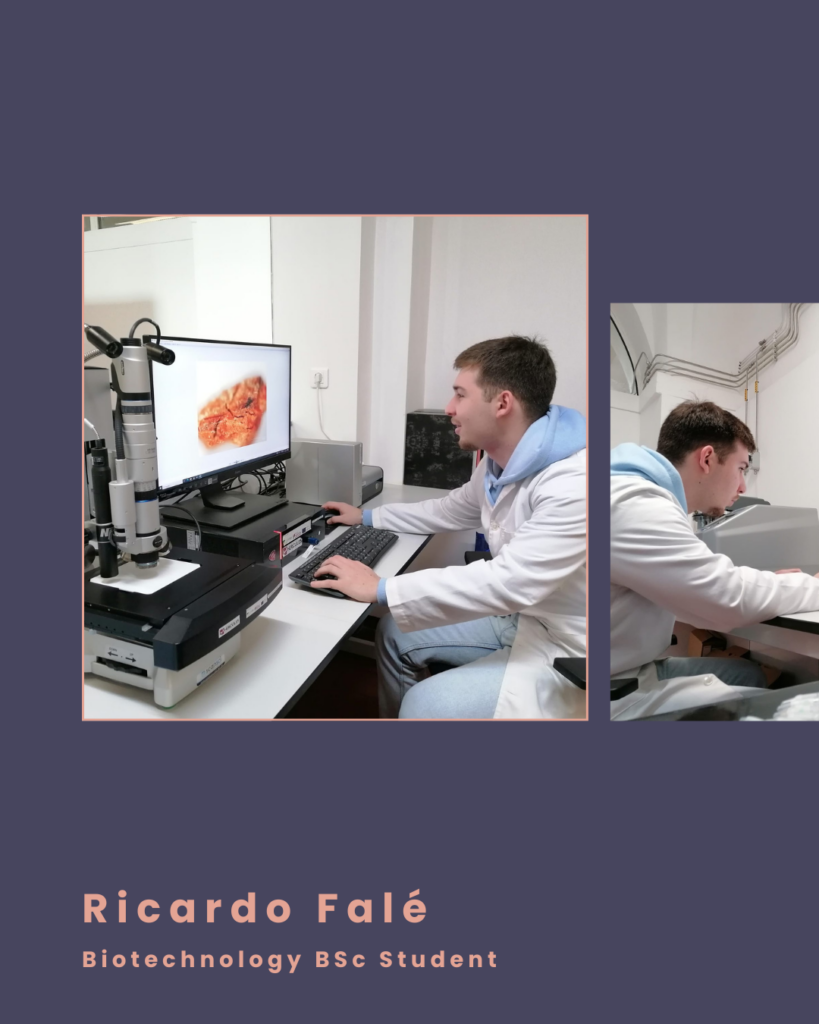
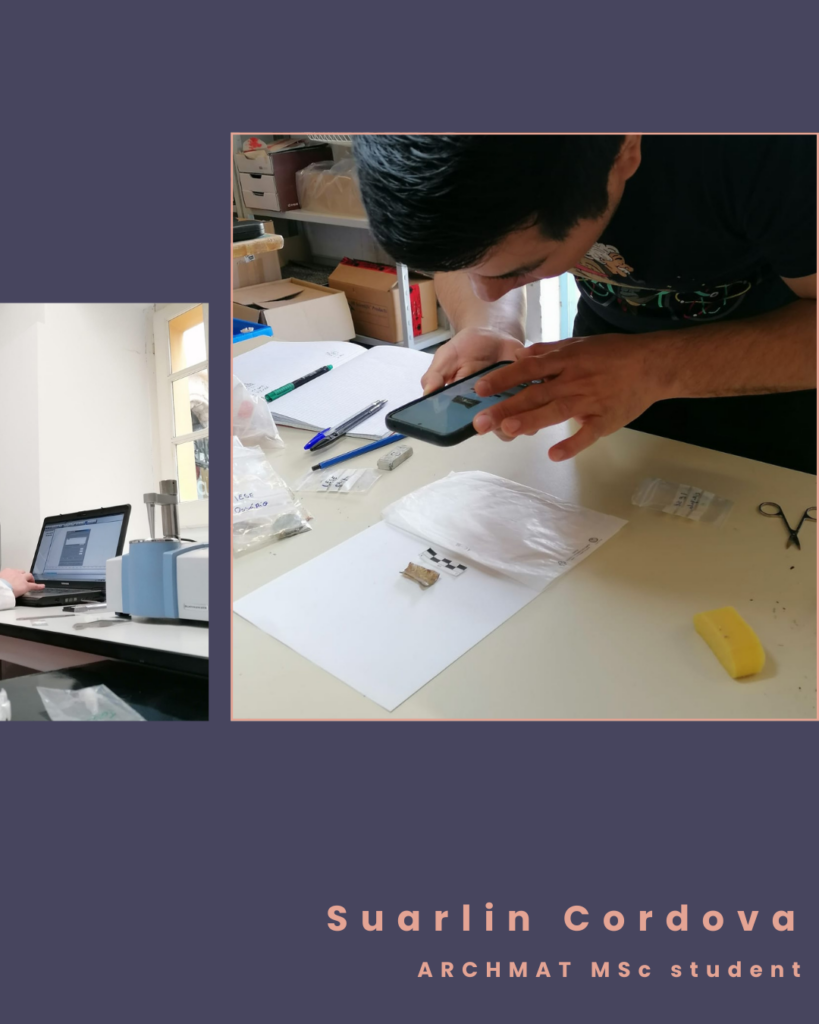
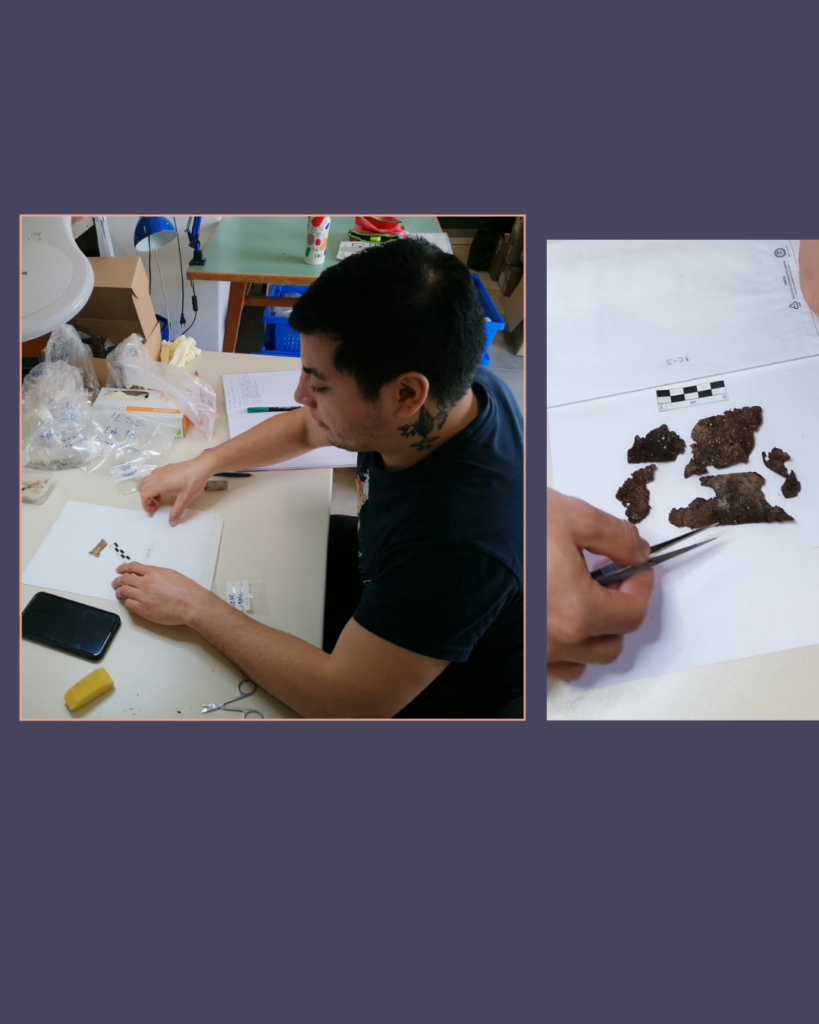

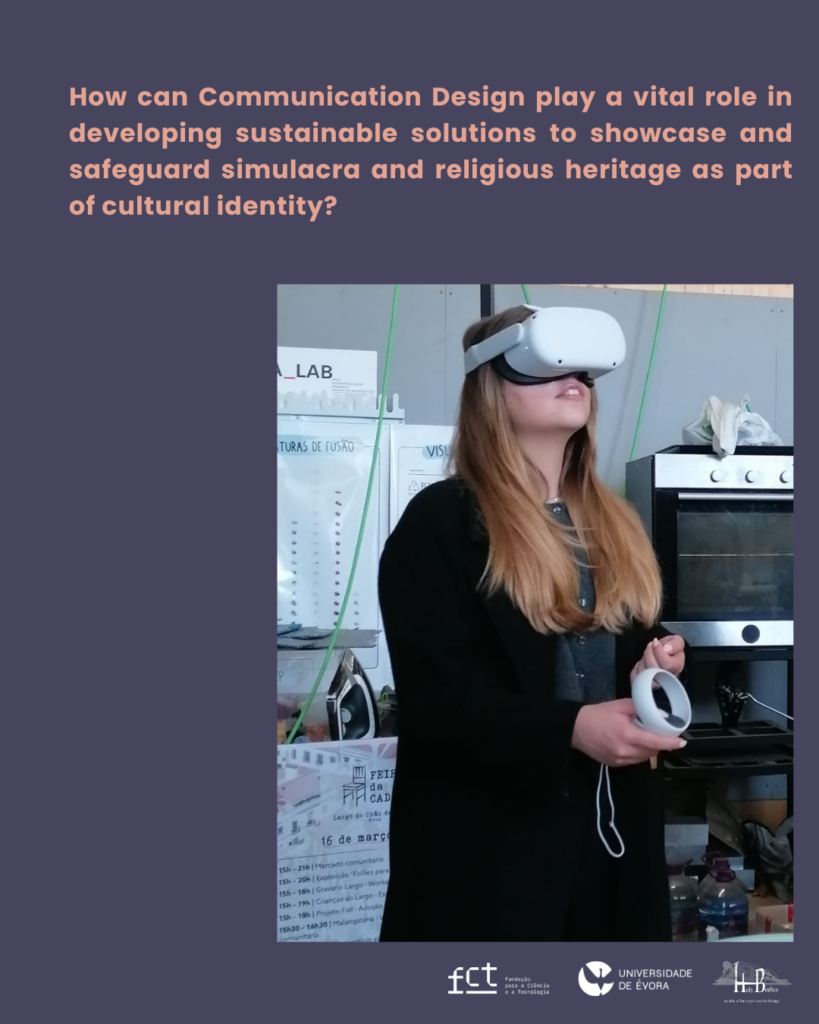
On March 18th, HB & HERCULES Laboratory team members took part in the Cientificamente Provável program – an initiative that fosters knowledge exchange and enriches students’ learning journeys.
Teresa Ferreira (HB PI) and Joana Palmeirão (HB postdoc) led a short talk, introducing key concepts like simulacra, relics, heritage, and science, and explaining how they intertwine.
Students then dove into a hands-on dyeing workshop, recreating historical techniques to colour textile fibres using natural products.
We also showcased 3D digitization and gave students the chance to step into virtual reality, immersing themselves in a digital world where some of the simulacra from the HB project are already preserved.
We thank our team: Cristina Dias, Joana Palmeirão, Luís Sousa, Marius Araújo, and Teresa Ferreira.
A Special thanks to Isabel Gameiro from Escola Secundária André de Gouveia for her enthusiasm and coordination, and to all the students who embraced this activity.


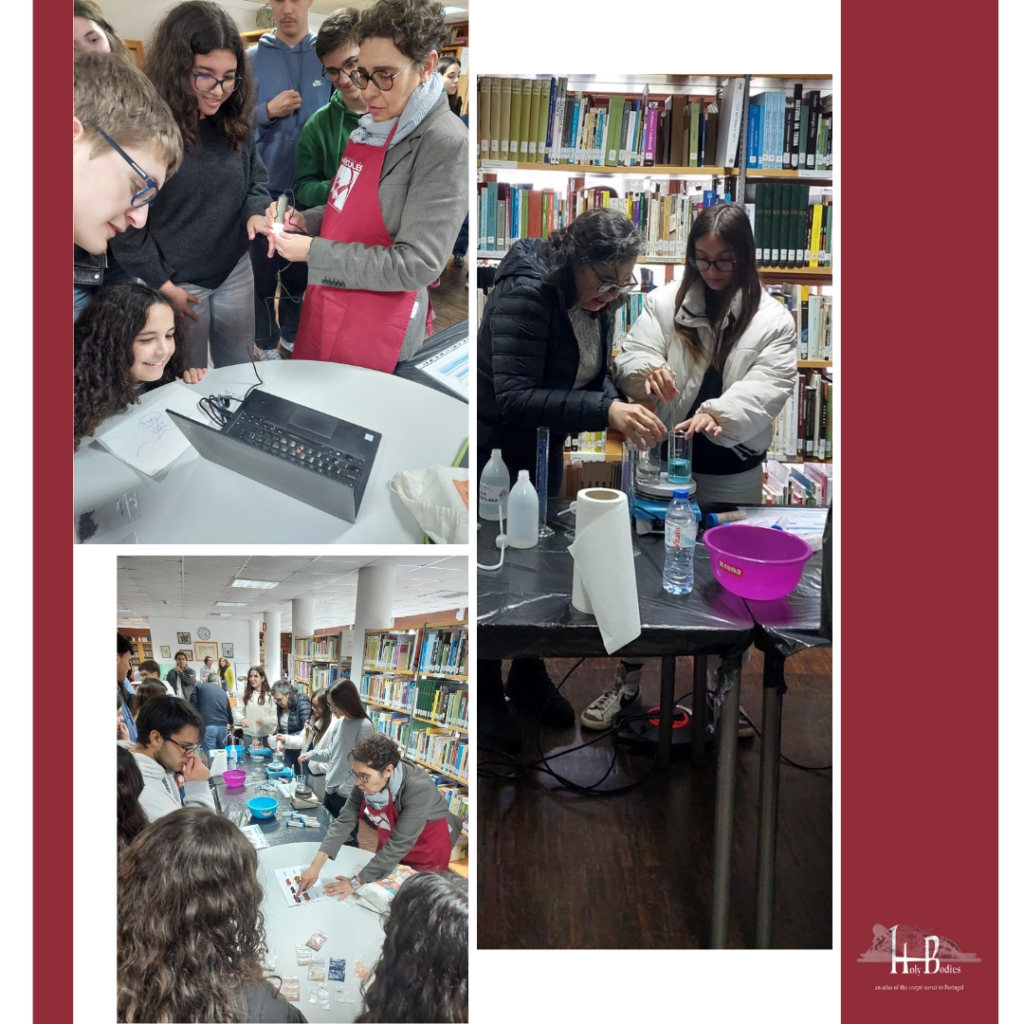
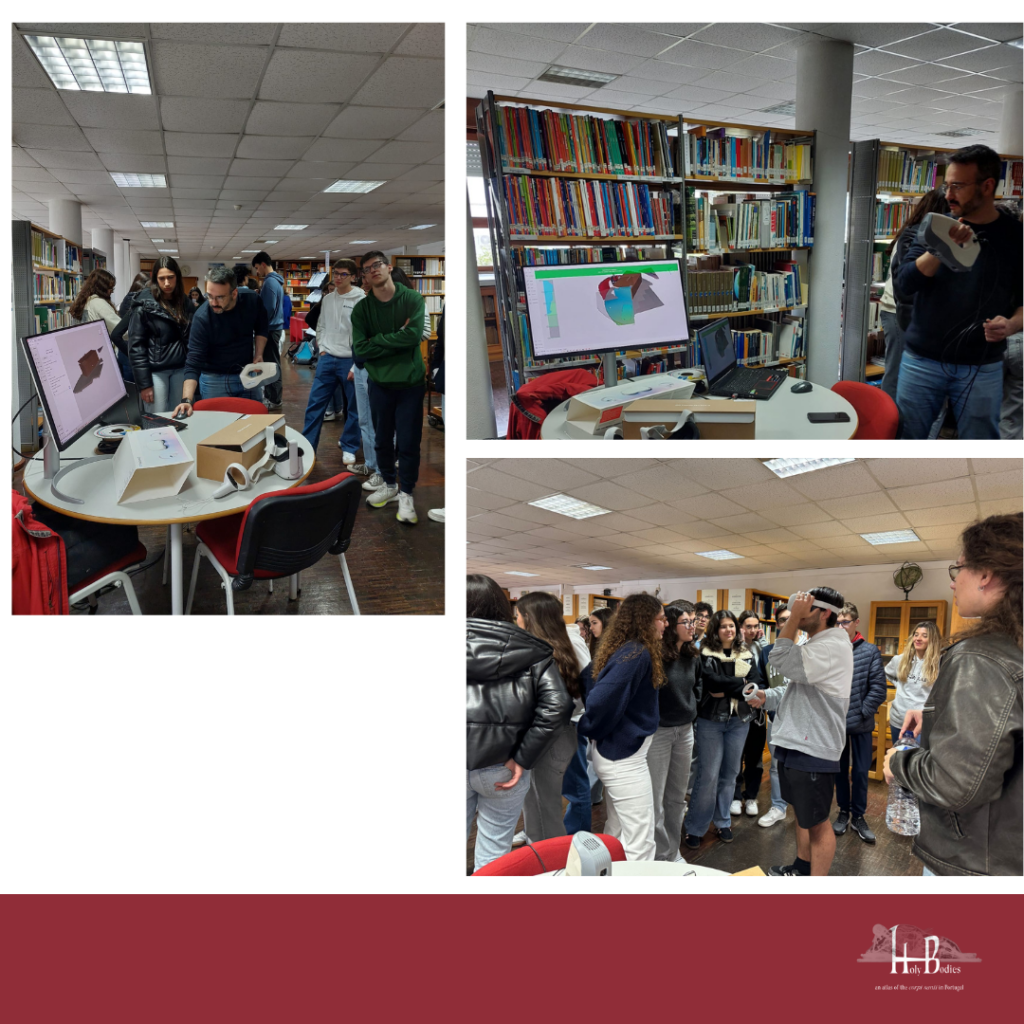
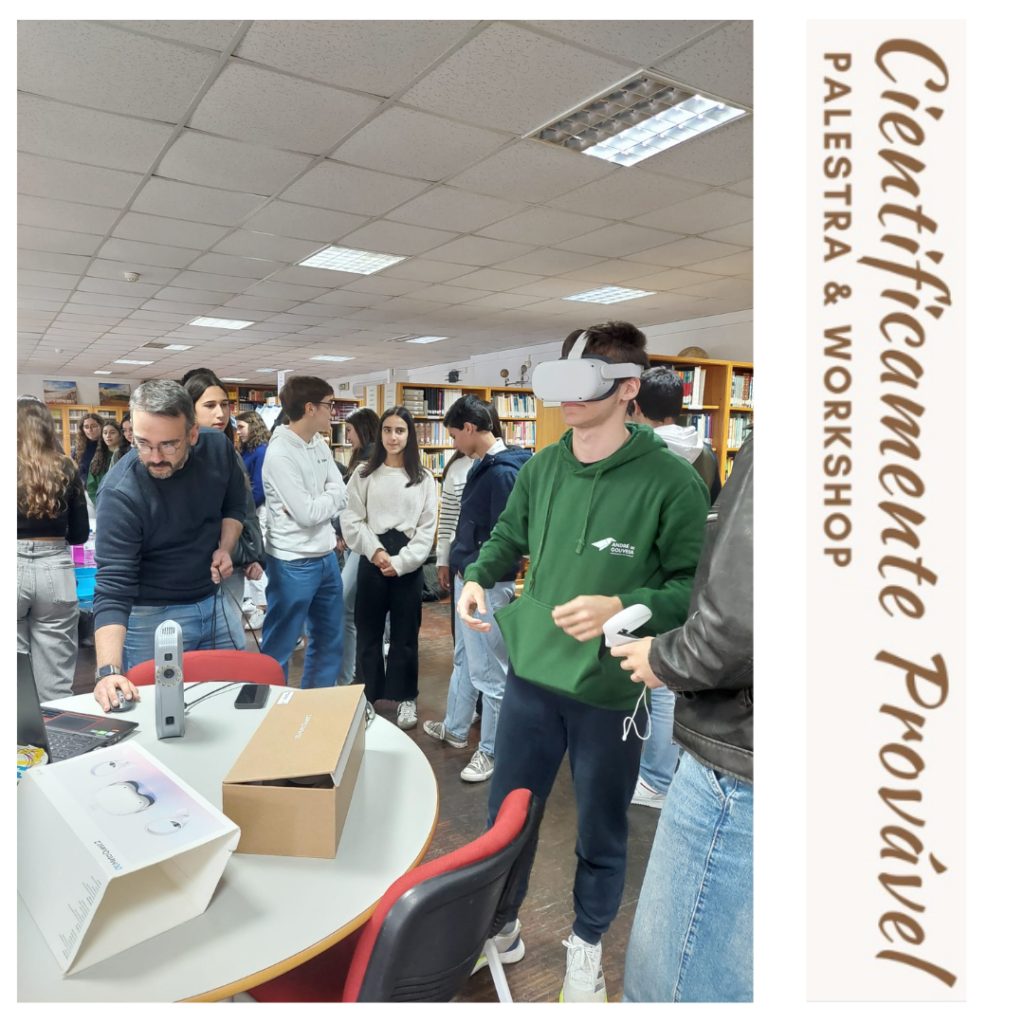
From 10th-14th and 18th-20th February, our team embarked on a fieldwork campaign in Lisbon and its surroundings. From historic churches to palaces and monasteries, we meticulously studied an array of simulacra at:
– Igreja Paroquial de St Nicolau, Igreja de St Maria Madalena, Igreja de St António, and Convento dos Cardaes (Lisbon)
– Capela do Palácio Caldas (CDS headquarters, Lisbon)
– Palácio dos Marqueses de Pombal (Oeiras)
– Convento de St. António de Varatojo (Torres Vedras)
– Palácio Nacional de Queluz (Queluz)
Our interdisciplinary team—conservators, chemists, biological anthropologist, digital humanities experts, and photographers—worked in situ to document, analyse, digitise, and preserve this (still) underappreciated religious heritage.
But can you imagine how many simulacra were under focus?
St Bonifácio, St Vitória, St Fulgêncio, St Justina, St Vitório, St Eleonora, St Vitória, St Burcio, St Benedito & St Clemente!
Soon, they will be part of our upcoming database, where you’ll be able to explore the insights Holy Bodies is uncovering.
